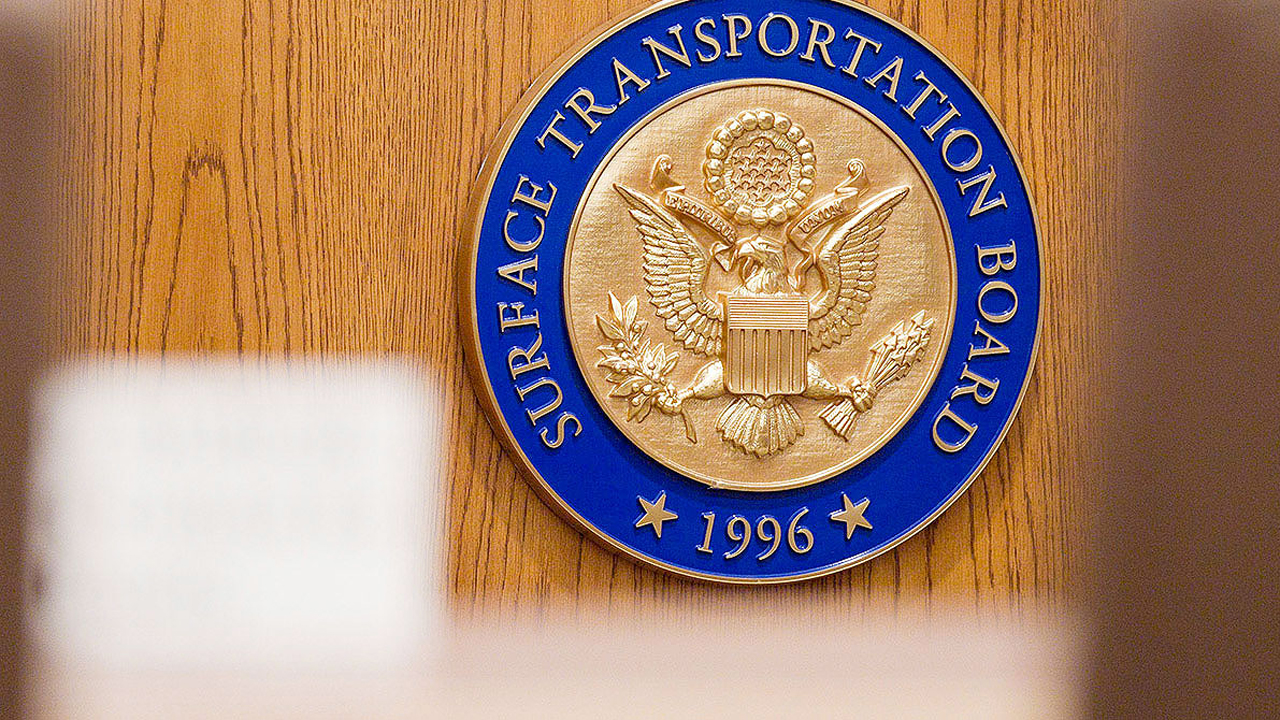
STB Seeks Comments on Private Railcar Rulemaking Petition
Written by Marybeth Luczak, Executive Editor
The Surface Transportation Board (STB) is inviting public comment on a Petition for Rulemaking that would update the demurrage and accessorial rules governing the railroads’ use and handling of privately owned freight cars. Responses are due by June 30, 2022.
The North America Freight Car Association (NAFCA), National Grain and Feed Association (NGFA), Chlorine Institute (CI), and National Oilseed Processors Association (NOPA) on July 26, 2021 filed a petition for rulemaking. They proposed the STB’s adoption of “regulations, pursuant to its car service authority under 49 U.S.C. § 11122(a)(2), that would allow private railcar providers [shippers, receivers, or other parties that own or lease private railcars] to assess a ‘private railcar delay charge’ when a private freight car does not move for more than 72 consecutive hours at any point between the time it is ‘released for transportation’ and the time it is ‘either constructively placed or actually placed at the private railcar provider’s facility or designated location,’” the STB explained in its Nov. 23, 2021 decision to open a proceeding on the matter.
The associations noted in their July filing that the “overall goal of this proposal … is to maximize the Class I railroads’ efficient use of private railcars without unduly infringing upon the railroads’ freight operations over their respective systems, recognizing that some level of service variability is inherent in any railroad’s operations.”
“[A]n update to the rules governing the railroads’ use of private railcars is long overdue,” the associations wrote, “because the railroad industry has evolved to the point that approximately 73% of the railcars in service today nationwide—approximately 1.2 million railcars—are no longer owned by railroads, but are … purchased, or leased, and maintained, by non-railroad entities at little or no cost to the railroads that use them.”

The STB received replies to the petition from the Association of American Railroads (AAR); CSX; Union Pacific (UP); Institute for Scrap Recycling Industries, Inc. (ISRI); a Joint Shippers group including the American Chemistry Council, The Fertilizer Institute, and National Industrial Transportation League; National Association of Chemical Distributors (NACD); National Coal Transportation Association (NCTA); Private Railcar Food and Beverage Association (PRFBA); American Fuel & Petrochemical Manufacturers (AFPM); Freight Rail Customer Alliance (FRCA); and the Canadian Oilseed Processors Association (COPA). NGFA and the American Short Line and Regional Railroad Association filed notices of intent to participate.
While many supported the petition (ISRI, Joint Shippers, NACD, NCTA, PRFBA, AFPM, FRCA and COPA), AAR, CSX and UP opposed it.
STB is now requesting comments on the issues raised in the petition as well as on 10 specific questions. (Download the April 1, 2022 decision below.)
The questions are:
“1. Petitioners assert that the Board’s current regulations and policies do not create sufficient incentives for Class I carriers to use private freight cars efficiently. … The Board invites commenters to provide detailed, concrete examples of carriers’ inefficient use of private freight cars (i.e., the carriers and car owners involved, relevant dates and times, etc.). They may also wish to provide context for their comments by including information about the quantity of private freight cars owned or leased, volume of traffic shipped, storage capacity, and seasonality of shipments (if any). If requested, a protective order may be issued that would allow sensitive information to be filed under seal. In particular, the Board asks commenters to address the following:
“a. How frequently do carriers hold private freight cars for more than 72 consecutive hours? The Board requests that commenters provide supporting data on the frequency of this occurrence, where available.
“b. To the extent known by the commenter, why do carriers hold private freight cars for more than 72 consecutive hours?
“c. To the extent known by the commenter, at which location(s) on the rail system are private freight cars held for more than 72 consecutive hours?
“d. How are rail users’ operations, facilities, production, and/or finances affected?
“e. Has the frequency and severity of the issue changed with the implementation of operating changes by Class I railroads?”
“2. UP asserts that Petitioners’ proposed regulations are unnecessary because private railcar providers have other avenues to pursue relief, such as through specific service commitments in contracts. … Do such contract service commitments include similar terms to the regulations proposed by Petitioners?”
“3. How, if at all, would Petitioners’ proposal regulate “car service” within the meaning of 49 U.S.C. § 11122(a) by ‘encourag[ing] the purchase, acquisition, and efficient use of freight cars’?
“a. The Board invites commenters to address AAR’s argument that Petitioners’ proposal would regulate the ‘transportation services’ that railroads provide, rather than ‘car service’ within the meaning of § 11122(a). …
“b. To what extent is a finding of inadequate car supply a prerequisite for the Board to adopt Petitioners’ proposed regulations?
“c. Do rail users currently lack access to an adequate supply of freight cars or anticipate a future freight car shortage? … If so, how would the proposed regulations help solve or mitigate the issue? The Board requests that commenters provide supporting data on any claim of a current or future inadequacy of car supply, where available.
“d. Petitioners contend that their proposed regulations would ‘result in the national railcar fleet being of a more rational size to utilize existing rail system capacity and meet demand.’ … How would the proposed regulations lead to a more rationally sized freight car fleet? … How, if at all, would a more rationally sized freight car fleet ensure an adequate supply of freight cars?”
“4. How would Petitioners’ proposed regulations affect rail users that do not use private freight cars? For example, CSXT, UP, and AAR argue that Petitioners’ proposed regulations would create incentives for carriers to prioritize private freight cars to the disadvantage of rail users that use railroad-owned freight cars.”
“ 5. Petitioners propose that charges would be assessed unless ‘the rail carrier demonstrates that it was not a cause of the [72 hours] being exceeded despite exercising due diligence.’ …
“a. In what kinds of circumstances should carriers be able to show that they were not ‘a cause’ of the 72 hours being exceeded?
“b. What kind of actions should constitute ‘due diligence’?
“c. How would this standard account for the possibility raised by AAR that carriers may hold private freight cars longer than 72 consecutive hours to improve the overall efficiency of the rail network (i.e., to prevent congestion at terminals during times of peak demand or to recover from network disruptions caused by weather events)? …
“d. How would this standard account for rail users’ own car supply decisions? For example, UP argues that Petitioners’ proposed regulations would ‘incentivize shippers to acquire additional freight cars and deploy them during service disruptions, despite their potential to contribute to congestion problems.’”
“6. How would rail network efficiency be affected by the proposal?
“a. The Board requests that commenters provide data, where available, to support claims that the rail network would be more (or less) efficient as a result of Petitioners’ proposed rule.
“b. Under Petitioners’ approach, to what extent would carriers have incentives to make potentially inefficient movements solely to avoid charges?”
“7. Under Petitioners’ proposed regulations, private railcar providers would be able to assess charges if the ‘CLM [Car Location Message] location city of CLM Sighting Code’ [published by Railinc] of a private freight car has not changed for more than 72 consecutive hours. …
“a. Why is 72 hours an appropriate timeframe and not, for example, 48 hours or 96 hours?
“b. Why should charges be based on when cars are idle for more than 72 consecutive hours, as opposed to, for example, overall transit idle times for the entire trip or when the placement of private freight cars exceeds projected transit times?
“c. Are CLM Event Sighting Codes a practical way to measure idle time? … If not, what metric, if any, would be more useful as the basis for assessing delay charges?
“d. At what point should the timeframe begin (i.e., as soon as a rail user releases a private freight car, when the carrier picks up the private freight car, or some other point)? … And if the 72-hour timeframe begins when private freight cars are released, how would this timeframe apply to rail users that receive service only once or twice per week?”
“8. Petitioners’ proposal contemplates that the amount of the ‘private railcar delay charge’ would correspond to the carrier’s applicable demurrage or storage charge unless the carrier could demonstrate that such a charge would be “unreasonable and inappropriate’ in a particular situation. …
“a. Is it appropriate for the Board to equate the amount of the ‘private railcar delay charge’ to a demurrage or storage charge in most cases?
“b. To what extent are there practical alternatives to equating Petitioners’ proposed ‘private railcar delay charge’ to a demurrage or storage charge and what are the merits of those alternatives?”
“9. Commenters should address the following questions about how the regulations proposed by Petitioners would be implemented:
“a. Which party would be responsible for tracking the CLM Event Sighting Codes for private freight cars and invoicing in accordance with the proposed regulations?
“b. Joint Shippers suggest that the Board could require carriers to credit charges against their demurrage invoices. … How would compensation be handled under this proposal for rail users that do not incur demurrage charges or incur fewer charges than would be owed pursuant to the proposed regulations?”
“10. Petitioners suggest that the proposed regulations should apply only to Class I carriers. … How, if at all, would Class II and Class III carriers be impacted by the proposed regulations, if limited to Class I carriers?”
Once comments are submitted, replies are due by Aug. 1, 2022, according to STB.



